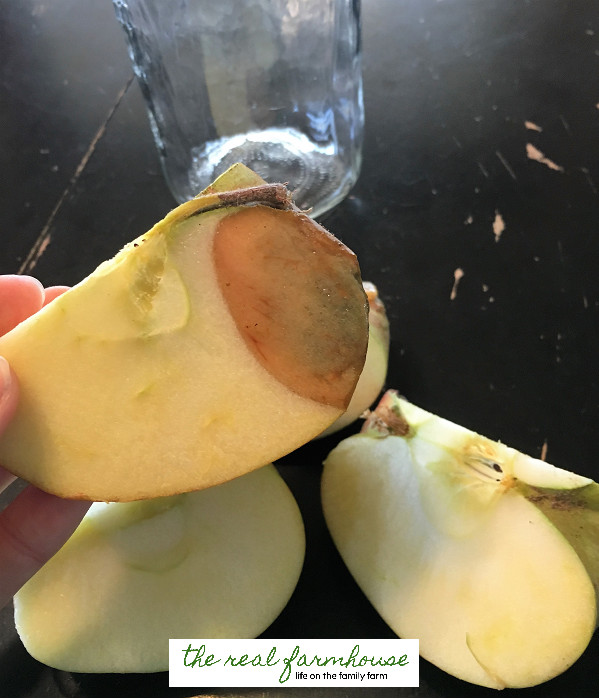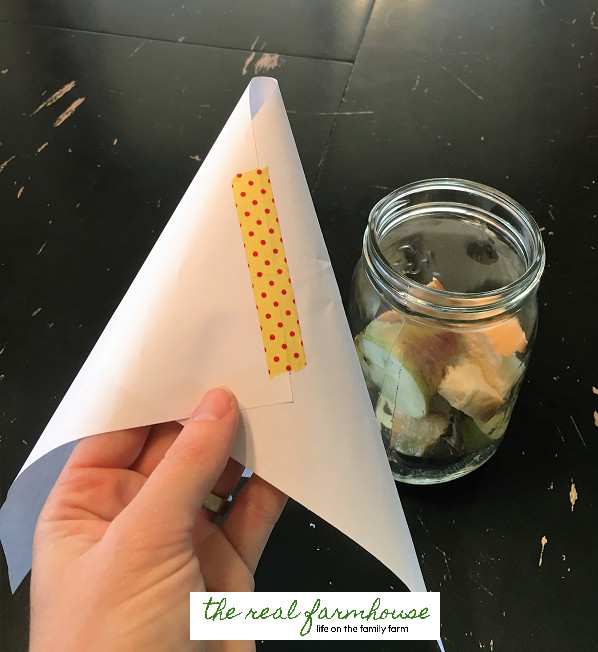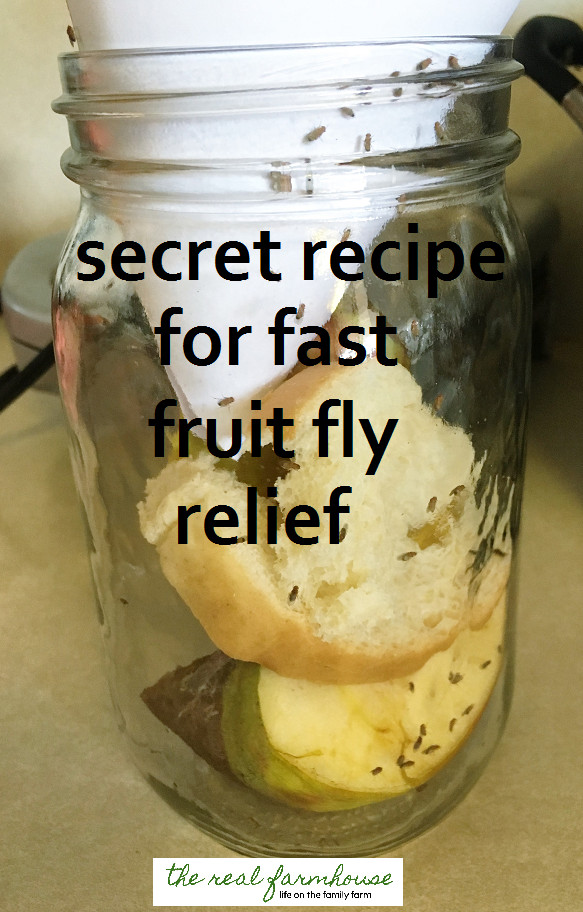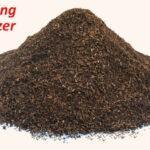Fruit flies buzzing around your fresh produce can be a real nuisance, especially during harvest season. At flyermedia.net, we understand the frustration of dealing with these tiny invaders and offer a quick, effective solution to reclaim your kitchen. Discover how to eliminate fruit flies swiftly with our simple, two-minute trap, ensuring a pest-free environment. Learn about controlling infestations, food safety, and effective elimination strategies to keep your home clean and enjoyable.
1. What Exactly Are Fruit Flies and Why Are They Attracted to My Home?
Fruit flies, also known as vinegar flies, are small insects attracted to ripe, rotting, or fermenting fruits and vegetables. These pests are drawn to the sweet smell of overripe produce, making your kitchen a prime target.
Understanding Fruit Flies
- Scientific Name: Drosophila melanogaster
- Size: Tiny, typically 3-4 mm long
- Lifespan: About 40-50 days
- Reproduction: Rapid, females can lay hundreds of eggs near fermenting substances
Why They Invade Your Home
Fruit flies are attracted to:
- Overripe Fruits and Vegetables: Decaying produce is their primary food source.
- Fermenting Liquids: Spilled juice, beer, or wine can attract them.
- Garbage Disposals: Food remnants in drains provide a breeding ground.
- Dirty Mops and Sponges: These items can harbor fermenting organic matter.
According to a study by the University of California, Davis, fruit flies can detect and locate fermenting food sources from a considerable distance, making even the smallest amount of ripe fruit a potential attractant.
2. What Are the Key Signs of a Fruit Fly Infestation in My Kitchen?
The most obvious sign of a fruit fly infestation is seeing small flies hovering around fruit bowls, garbage cans, and sinks. Early detection can help prevent the infestation from worsening.
Common Indicators
- Visual Sightings: Noticing small flies buzzing around ripe fruits and vegetables.
- Concentration in Specific Areas: High activity near garbage disposals, fruit bowls, and spilled liquids.
- Increased Activity: More flies appearing as fruits ripen or rot.
Where to Look
- Fruit Bowls: Check for flies around bananas, apples, and other fruits.
- Garbage Cans: Especially those containing food waste.
- Sinks and Drains: Look for activity near garbage disposals and drain openings.
- Pantry: Inspect stored fruits and vegetables for signs of decay and fly activity.
Preventive Measures
Regularly cleaning and monitoring these areas can help reduce the risk of a full-blown infestation. Discard overripe produce promptly and keep surfaces clean to minimize attractants.
3. What Simple Ingredients Do I Need to Create a 2-Minute Fruit Fly Trap?
Creating an effective fruit fly trap doesn’t require special equipment. Common household items like a jar, apple cider vinegar, dish soap, and plastic wrap are all you need.
Essential Supplies
- Jar or Glass: Any container with a wide mouth will work.
- Apple Cider Vinegar (ACV): Acts as the primary attractant.
- Dish Soap: Breaks the surface tension of the vinegar, trapping the flies.
- Plastic Wrap or Paper Funnel: Covers the jar and allows flies to enter but not exit.
- Rubber Band (Optional): To secure the plastic wrap.
Why These Ingredients Work
- Apple Cider Vinegar: Fruit flies are highly attracted to the fermented scent of ACV.
- Dish Soap: A few drops are enough to disrupt the surface tension, causing flies to sink and drown.
- Plastic Wrap: Creates a barrier that prevents the flies from escaping once they enter.
Alternative Attractants
If you don’t have ACV, you can use:
- Red Wine Vinegar: Similar attractant properties.
- Overripe Fruit: A piece of banana or apple works well.
- Beer or Wine: Leftover dregs can be effective.
4. How Do I Assemble the DIY Fruit Fly Trap in Just 2 Minutes?
Assembling a fruit fly trap is quick and easy. Follow these steps to create a trap in just two minutes and start eliminating those pesky flies.
Step-by-Step Instructions
- Prepare the Jar: Pour about 1-2 inches of apple cider vinegar into the jar.
- Add Dish Soap: Add 2-3 drops of dish soap to the vinegar and gently stir.
- Cover the Jar:
- Plastic Wrap Method: Stretch a piece of plastic wrap tightly over the mouth of the jar and secure it with a rubber band.
- Paper Funnel Method: Roll a piece of paper into a cone shape with a small opening at the bottom and place it into the jar.
- Poke Holes:
- Plastic Wrap Method: Use a toothpick or skewer to poke several small holes in the plastic wrap.
- Paper Funnel Method: Ensure the bottom opening is large enough for flies to enter but small enough to prevent easy escape.
- Position the Trap: Place the trap in areas where you’ve seen fruit fly activity, such as near fruit bowls or garbage cans.
Tips for Success
- Placement Matters: Put the trap where flies are most active.
- Fresh Attractant: Replace the vinegar solution every few days for optimal effectiveness.
- Multiple Traps: Use several traps in different locations for comprehensive coverage.
Video Tutorial
For a visual guide, search online for “DIY fruit fly trap tutorial” on platforms like YouTube for step-by-step video instructions.
5. Where Are the Best Locations to Place the Fruit Fly Trap for Maximum Effectiveness?
The effectiveness of your fruit fly trap depends on strategic placement. Placing traps in areas with high fruit fly activity ensures the best results.
Optimal Placement Areas
- Near Fruit Bowls: Fruit flies are naturally drawn to ripe and decaying fruits.
- Kitchen Countertops: Especially where fruits and vegetables are stored.
- Garbage Cans: Areas with food waste are breeding grounds.
- Sinks and Drains: Check near garbage disposals and drain openings.
- Pantry: Inspect and place traps near stored fruits and vegetables.
Why Placement Matters
- Proximity: Placing traps close to the source of attraction increases the likelihood of catching flies.
- High-Traffic Areas: Areas where flies are frequently seen will yield better results.
- Avoiding Interference: Keep traps away from strong drafts or areas where they might be disturbed.
Specific Examples
- Banana Trap: Place a trap directly next to a fruit bowl containing ripe bananas.
- Garbage Disposal Trap: Set a trap on the kitchen counter near the sink to target flies breeding in the disposal.
- Pantry Inspection: Regularly inspect your pantry for infested produce and place traps accordingly.
6. What Other Natural Remedies Can I Use Alongside the Trap to Eliminate Fruit Flies?
While the vinegar trap is highly effective, combining it with other natural remedies can provide a comprehensive approach to fruit fly elimination.
Additional Natural Remedies
- Cleanliness: Thoroughly clean kitchen surfaces, sinks, and drains to remove food remnants.
- Proper Storage: Store fruits and vegetables in airtight containers or the refrigerator.
- Essential Oils: Use essential oils like peppermint, eucalyptus, or lavender as natural repellents.
- Boiling Water: Pour boiling water down drains to kill larvae and remove organic matter.
- Wine Trap: Leave out a bottle with a small amount of wine to attract and trap flies.
How These Remedies Work
- Cleanliness: Eliminates breeding grounds and food sources.
- Proper Storage: Prevents flies from accessing and infesting produce.
- Essential Oils: Repel flies with their strong scents.
- Boiling Water: Destroys larvae and cleans drains.
- Wine Trap: Attracts and drowns flies with its fermented scent.
Combining Remedies
- Clean and Trap: Clean your kitchen thoroughly and then set up the vinegar trap.
- Store and Repel: Store fruits properly and use essential oils to repel flies.
- Boil and Trap: Pour boiling water down drains and then place traps nearby to catch any remaining flies.
7. How Can I Prevent Fruit Flies From Returning After Eliminating Them?
Preventing a recurrence of fruit flies involves consistent cleanliness and proactive measures to eliminate attractants.
Preventive Strategies
- Regular Cleaning: Wipe down kitchen surfaces, sinks, and drains daily.
- Proper Food Storage: Store fruits and vegetables in airtight containers or the refrigerator.
- Prompt Waste Disposal: Empty garbage cans frequently and keep them clean.
- Drain Maintenance: Clean drains regularly with boiling water or drain cleaners.
- Inspect Produce: Check fruits and vegetables for signs of ripeness or decay.
Detailed Preventive Measures
- Surface Cleaning: Use disinfectant wipes or sprays to clean countertops, tables, and other surfaces where food is prepared or stored.
- Food Storage Practices: Place fruits and vegetables in sealed containers or resealable bags to prevent flies from accessing them.
- Garbage Disposal Habits: Use a garbage disposal cleaner regularly to remove food particles and prevent odors that attract flies.
Long-Term Prevention
- Ongoing Vigilance: Maintain consistent cleaning and storage habits.
- Routine Inspections: Regularly check for signs of fruit fly activity.
- Proactive Measures: Use natural repellents and traps as preventive measures.
8. Are There Any Commercial Products That Effectively Eliminate Fruit Flies?
While DIY traps are effective, several commercial products are designed to eliminate fruit flies quickly and efficiently.
Commercial Products
- Fruit Fly Traps: Pre-made traps that use attractants to lure and trap flies.
- Insecticide Sprays: Sprays specifically formulated to kill fruit flies.
- Drain Cleaners: Products designed to eliminate breeding grounds in drains.
- Fly Paper: Sticky paper that traps flies on contact.
Pros and Cons
- Fruit Fly Traps:
- Pros: Easy to use, effective, and safe for households with children and pets.
- Cons: Can be more expensive than DIY options.
- Insecticide Sprays:
- Pros: Fast-acting and can kill large numbers of flies quickly.
- Cons: May contain chemicals that are harmful to humans and pets, require careful application.
- Drain Cleaners:
- Pros: Target breeding grounds and prevent future infestations.
- Cons: May contain harsh chemicals that can damage pipes.
- Fly Paper:
- Pros: Simple and effective for trapping flies.
- Cons: Can be unsightly and may not be as effective as other methods.
Recommendations
- Safe Options: Look for traps that use non-toxic attractants.
- Targeted Sprays: Choose sprays specifically designed for fruit flies and follow safety instructions carefully.
- Natural Cleaners: Opt for drain cleaners with natural enzymes to avoid harsh chemicals.
9. What Are the Potential Health Risks Associated With Fruit Fly Infestations?
While fruit flies are generally considered a nuisance pest, there are potential health risks associated with their presence in your home.
Potential Health Risks
- Contamination: Fruit flies can carry bacteria and pathogens that can contaminate food.
- Allergies: Some individuals may be allergic to fruit flies or their droppings.
- Irritation: The presence of flies can be irritating and cause stress.
Detailed Risks
- Bacterial Transmission: Flies can pick up bacteria from garbage and decaying matter and transfer them to food surfaces.
- Allergic Reactions: Sensitive individuals may experience skin rashes, itching, or respiratory symptoms.
- Psychological Impact: Persistent infestations can cause stress, anxiety, and frustration.
Minimizing Risks
- Thorough Cleaning: Regularly clean and disinfect kitchen surfaces to remove potential contaminants.
- Proper Food Handling: Wash fruits and vegetables thoroughly before consumption.
- Effective Pest Control: Implement effective fruit fly control measures to reduce their presence in your home.
10. When Should I Seek Professional Pest Control for a Fruit Fly Problem?
While most fruit fly infestations can be managed with DIY methods, certain situations may require professional pest control services.
When to Call a Professional
- Severe Infestations: When DIY methods fail to control the infestation.
- Persistent Problems: If fruit flies continue to reappear despite preventive measures.
- Unknown Source: When the source of the infestation is difficult to locate.
- Health Concerns: If you have health concerns related to the infestation.
Benefits of Professional Pest Control
- Expertise: Professionals have the knowledge and experience to identify and eliminate fruit fly infestations effectively.
- Targeted Solutions: They can use specialized treatments to target breeding grounds and eliminate flies.
- Preventive Measures: Professionals can provide recommendations for preventing future infestations.
- Safety: They can use safe and effective products to protect your home and family.
Finding a Professional
- Local Pest Control Companies: Search online for reputable pest control companies in your area.
- Reviews and Referrals: Check online reviews and ask for referrals from friends and family.
- Certifications: Look for companies with certified and licensed technicians.
Maintaining a clean and pest-free home is essential for your health and well-being. With these tips and tricks from flyermedia.net, you can effectively manage and eliminate fruit flies, ensuring your kitchen remains a welcoming and hygienic space.
Are you looking for more ways to improve your living environment and prevent pest infestations? Visit flyermedia.net for expert advice, practical tips, and the latest information on maintaining a clean and healthy home.
FAQ About Fruit Flies
1. What are fruit flies attracted to the most?
Fruit flies are most attracted to ripe, rotting, or fermenting fruits and vegetables, as well as sugary liquids and spills.
2. How quickly can fruit flies multiply?
Fruit flies can multiply very quickly, with females laying hundreds of eggs at a time and a life cycle of only about a week.
3. Can fruit flies cause any harm to humans?
While generally harmless, fruit flies can carry bacteria and pathogens that can contaminate food and potentially cause illness.
4. What is the best way to get rid of fruit flies in my kitchen?
The best way to get rid of fruit flies is to use a combination of DIY traps, thorough cleaning, and proper food storage practices.
5. Is apple cider vinegar the only effective attractant for fruit fly traps?
No, you can also use red wine vinegar, overripe fruit, or leftover beer or wine as effective attractants for fruit fly traps.
6. How often should I replace the attractant in my fruit fly trap?
For optimal effectiveness, you should replace the attractant in your fruit fly trap every few days, or whenever it becomes diluted or loses its scent.
7. Can fruit flies breed in my garbage disposal?
Yes, fruit flies can breed in garbage disposals due to the presence of food remnants and organic matter.
8. Are there any plants that repel fruit flies?
Some plants, such as basil, mint, and lavender, are believed to repel fruit flies with their strong scents.
9. How do I prevent fruit flies from entering my home?
To prevent fruit flies from entering your home, seal cracks and openings in windows and doors, use screens, and maintain a clean and pest-free environment.
10. When should I consider calling a professional pest control service for fruit flies?
If you have a severe or persistent fruit fly infestation that you cannot control with DIY methods, it may be time to call a professional pest control service.
 DIY fruit fly trap ingredients including a jar, paper, tape, fruit, and bread
DIY fruit fly trap ingredients including a jar, paper, tape, fruit, and bread
 Roll a paper into a funnel shape for fruit fly trap
Roll a paper into a funnel shape for fruit fly trap
 Fruit fly trap with fruit and bread inside a jar
Fruit fly trap with fruit and bread inside a jar
